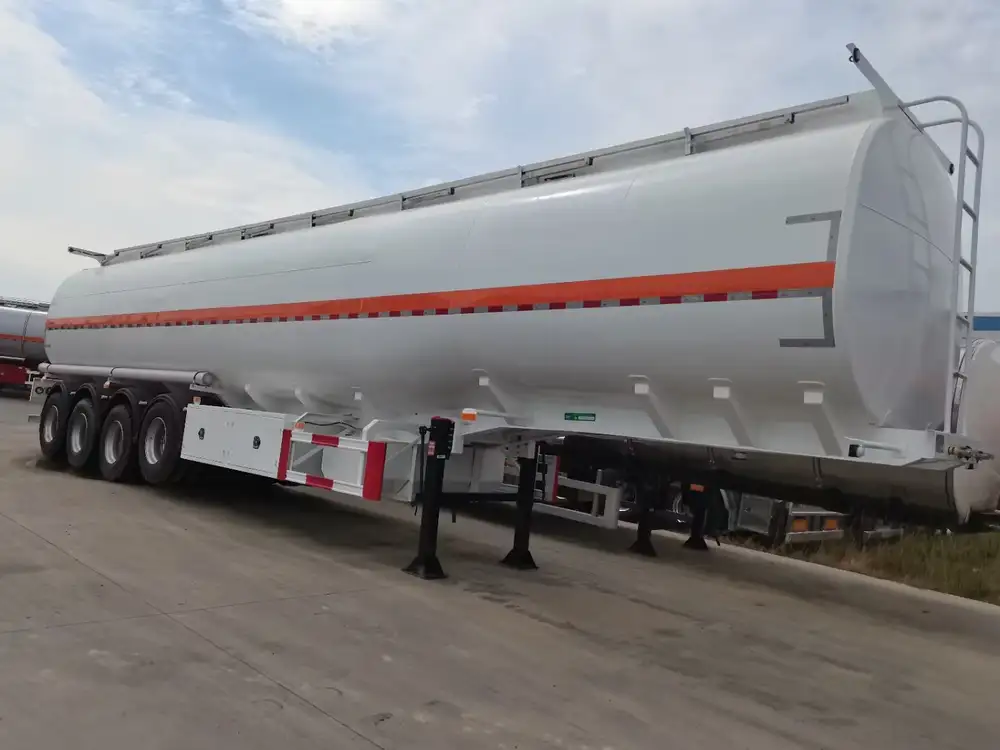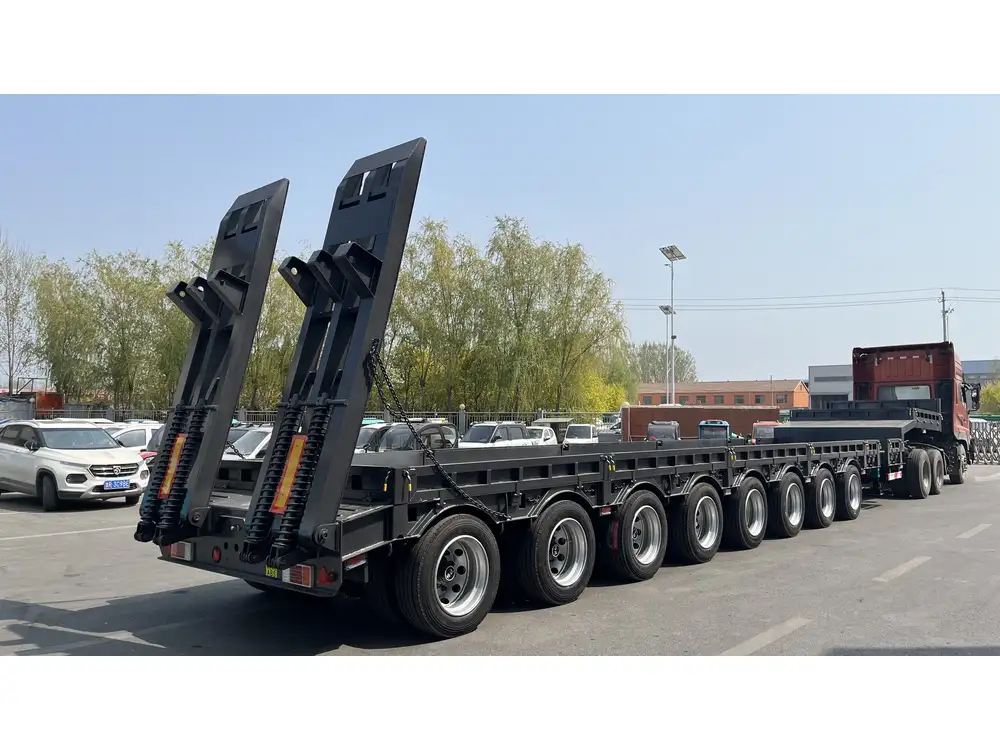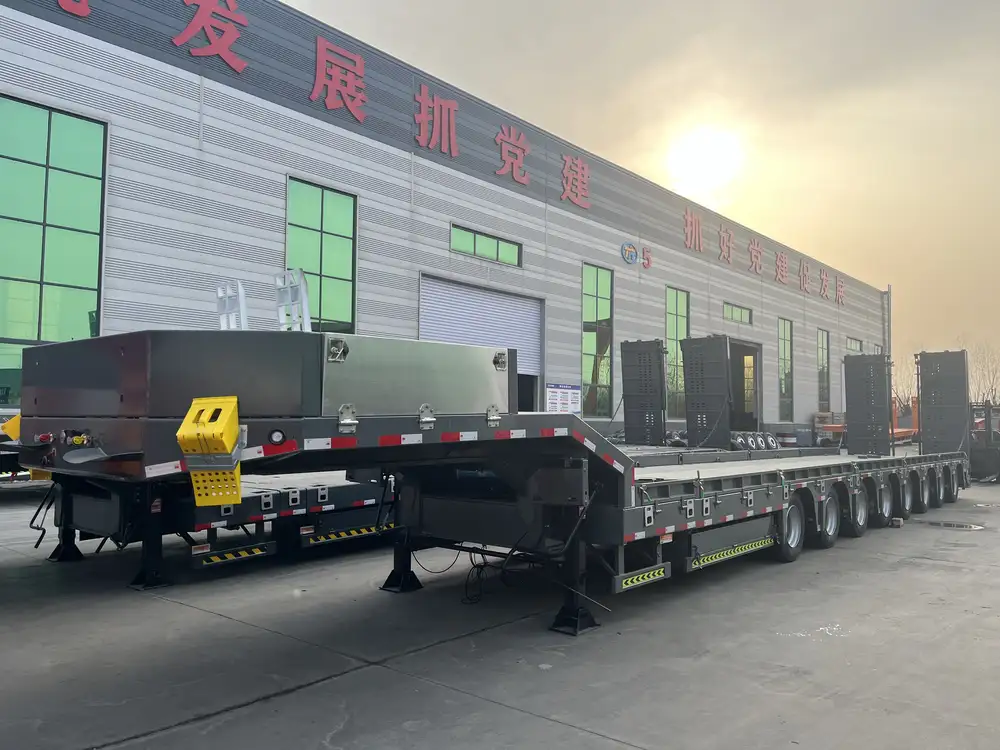Flatbed trailers are indispensable tools in the logistics and transportation sectors, renowned for their versatility and efficiency. This article delves into the intricacies of flatbed trailer sizes, aiming to equip manufacturers, owners, and logistics managers with the knowledge necessary for optimal utilization.
What are Flatbed Trailers?
Flatbed trailers are a type of transport vehicle without sides or a roof. This design allows for the easy loading and unloading of cargo, making them ideal for carrying oversized or heavy items that may not fit within the confines of traditional enclosed trailers. The absence of sides facilitates efficient loading from all angles, which can lead to increased operational efficiency.
Common Flatbed Trailer Sizes
To grasp the diverse applications of flatbed trailers, comprehending the standard sizes is imperative. Here’s a concise breakdown of various flatbed trailer dimensions:
| Trailer Type | Standard Lengths | Standard Width | Height (Deck) | Payload Capacity |
|---|---|---|---|---|
| Gooseneck Flatbed | 20-40 ft | 102 inches | 36-44 inches | 15,000-30,000 lbs |
| Bumper Pull Flatbed | 12-32 ft | 96-102 inches | 36-44 inches | 6,000-15,000 lbs |
| Step Deck Trailer | 40-53 ft | 102 inches | 25-36 inches | 40,000-45,000 lbs |
| Lowboy Trailer | 24-53 ft | 102 inches | 18-24 inches | 40,000-65,000 lbs |

Detailed Size Analysis
Gooseneck Flatbed Trailers
Gooseneck flatbed trailers are characterized by their long neck, which connects the trailer to a truck bed. Their lengths range significantly from 20 to 40 feet with a payload capacity stretching between 15,000 and 30,000 pounds. This versatility makes them suitable for transporting heavy machinery or construction materials.
Bumper Pull Flatbed Trailers
Typically shorter than gooseneck models, bumper pull flatbed trailers range between 12 and 32 feet. Their lightweight nature allows for ease of maneuverability in urban environments, with payload capacities that hover around 6,000 to 15,000 pounds. They are a go-to choice for light transport and small-scale logistical operations.

Step Deck Trailers
Step deck trailers feature an upper and lower deck, which facilitates carrying taller cargo while adhering to height regulations. Ranging from 40 to 53 feet in length, these trailers can handle substantial weights, with capacities nearing 45,000 pounds. Their unique design allows for the transportation of oversized loads without the need for special permits.
Lowboy Trailers
Lowboy trailers are essential in the transportation of heavy industrial equipment. With lower deck heights (18-24 inches above the ground), they provide greater stability for large loads. Their lengths range from 24 to 53 feet, accompanied by impressive load capabilities of 40,000 to 65,000 pounds, making them a staple in construction and heavy machinery logistics.
Factors Influencing Size Selection
When deciding which flatbed trailer size to use, several key factors must be considered:

1. Type of Cargo
Different types of cargo require specific trailer configurations. For example:
- Large machinery: Preferably transported on a lowboy for height clearance.
- Bulk materials: Can utilize a traditional flatbed for easier access.
2. Weight Requirements
Understanding the weight limits of the chosen trailer is crucial. Exceeding weight capacities can lead to legal issues, equipment damage, and unsafe driving conditions.
3. Transport Distance
The longer the distance, the more essential it is to select a trailer that can handle the load efficiently. Increased road wear and potential for cargo damage are critical considerations.

4. Regulatory Compliance
Each state may have different laws governing trailer dimensions and load capabilities. Ensuring compliance with these regulations is not just advisable; it’s imperative.
5. Maneuverability Needs
In urban settings, shorter trailers may offer a significant advantage, allowing for easier navigation on tight roads or job sites.
Measuring Flatbed Trailers: A Quick Guide
Accurate measurement is essential for ensuring that your flatbed trailer meets your operational needs. Here’s a quick measurement guide:
- Length Measurements: Measure from the front of the trailer to the back, ensuring the inclusion of any extensions or accessories.
- Width Measurements: Measure from side to side; standard flatbed widths are usually 96 to 102 inches.
- Height Measurements: Measure from the ground to the top of the deck, which impacts loading capabilities.

Advantages of Flatbed Trailers
Versatility in Cargo Transport
Flatbed trailers can accommodate a wide array of cargo types. Here’s how:
- Unenclosed Design: Essential for large or heavy items.
- Multiple Loading Options: Side, rear, or top loading capabilities figure into operational efficiency.
Enhanced Stability
The design of flatbeds fosters stability during transport. The low center of gravity for many larger trailers can significantly reduce the risk of tipping, especially when navigating uneven terrains.

Easy Access
Flatbed trailers allow for rapid loading and unloading, which minimizes downtime at shipping docks. This aspect is critical in time-sensitive logistics operations.
Potential Drawbacks of Flatbed Trailers
Despite their many advantages, flatbed trailers have potential drawbacks:
Exposure to Elements
Without sides or roofs, cargo is more susceptible to weather conditions. Appropriate tarping or strapping techniques may be necessary to protect goods.

Security Risks
Open cargo can be at higher risk of theft. Securing load with appropriate straps and locks is essential.
Weight Distribution Challenges
Careful and correct weight distribution is vital to prevent swaying or instability during transit.
Conclusion: Selecting the Right Flatbed Trailer Size
The selection of an appropriate flatbed trailer size depends on a multiplicity of factors including cargo type, weight, and local regulations. Understanding the nuances of different flatbed trailer types enhances operational efficiency and ensures compliance with safety standards.

Final Recommendations
- Assess Your Needs: Regularly evaluate your cargo and transport requirements to determine whether your current flatbed trailer adequately meets operational demands.
- Stay Informed: Keep abreast of local transport laws and regulations regarding trailer sizes and load limits.
- Invest in Quality: Choose high-quality trailers to ensure durability and safety in transportation operations.
By grasping the fundamentals of flatbed trailer sizes and employing strategic planning, businesses can optimize their transport solutions, enhancing overall productivity and efficiency in their operations.



